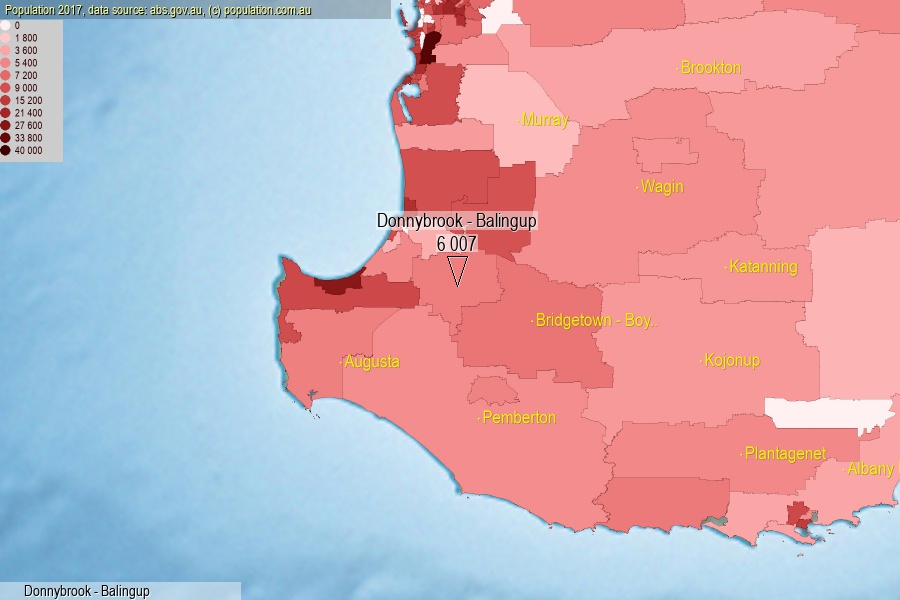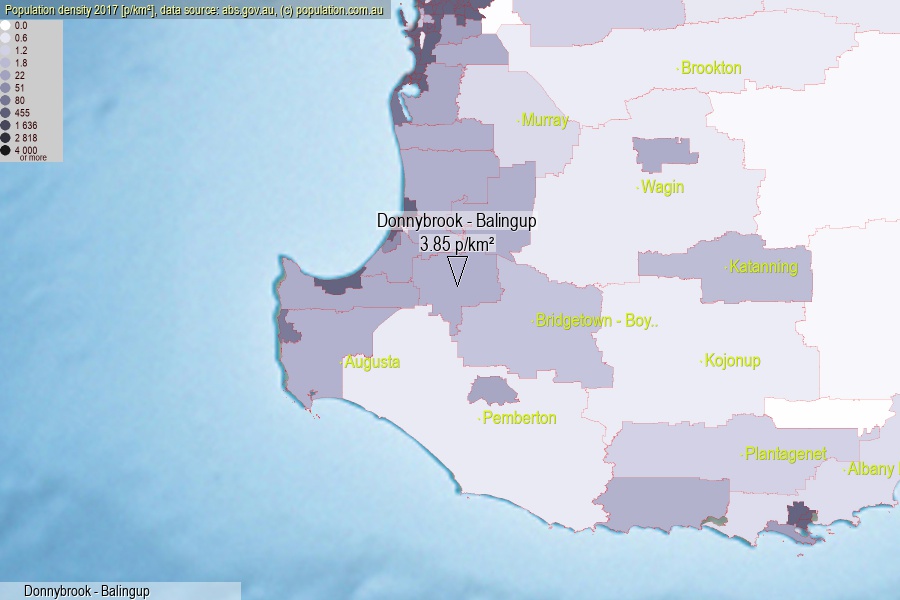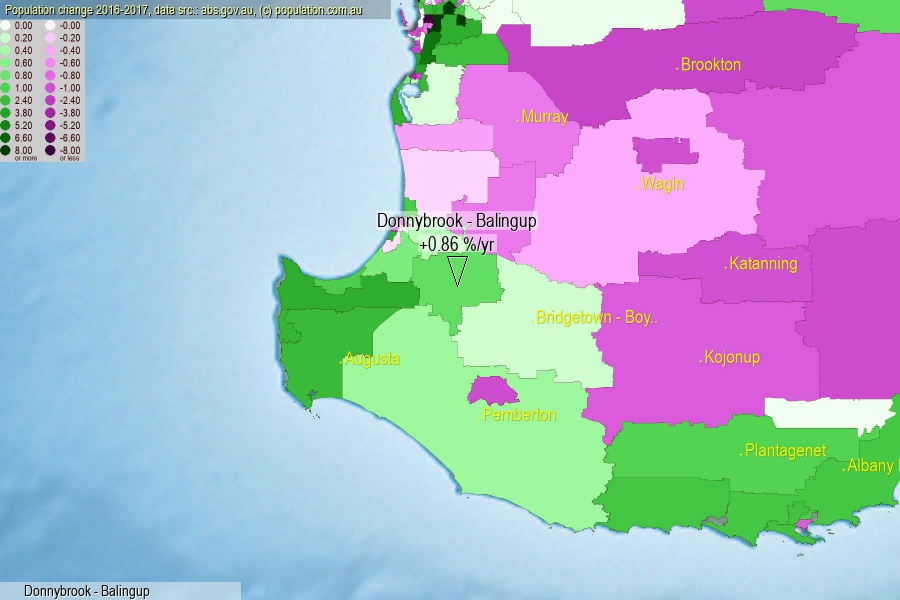 population.com.au
population.com.auLast official estimated population of Donnybrook - Balingup (as Statistical Area Level 2) was 6 007 people (on 2017-06-30)[2]. This was 0.02% of total Australian population and 0.232% of WA population. Area of Donnybrook - Balingup is 1 559.90 km², in this year population density was 3.85 p/km² . If population growth rate would be same as in period 2016-2017 (+0.86%/yr), Donnybrook - Balingup population in 2025 would be 6 431. [0]



Click to enlarge. Donnybrook - Balingup is located in the center of the images.
Population [people], population density [p./km²] and population change [%/year] [2]
View borders » (new window) [4]
[1991-1992] +1.02 %/Yr.
[1992-1993] +1.04 %/Yr.
[1993-1994] -0.17 %/Yr.
[1994-1995] +0.79 %/Yr.
[1995-1996] +1.71 %/Yr.
[1996-1997] +0.93 %/Yr.
[1997-1998] +2.24 %/Yr.
[1998-1999] +3.82 %/Yr.
[1999-2000] +0.78 %/Yr.
[2000-2001] +1.68 %/Yr.
[2001-2002] -0.40 %/Yr.
[2002-2003] -0.66 %/Yr.
[2003-2004] +0.43 %/Yr.
[2004-2005] +1.09 %/Yr.
[2005-2006] +4.65 %/Yr.
[2006-2007] +0.61 %/Yr.
[2007-2008] +2.29 %/Yr.
[2008-2009] +2.94 %/Yr.
[2009-2010] +1.98 %/Yr.
[2010-2011] +2.11 %/Yr.
[2011-2012] +3.04 %/Yr.
[2012-2013] +3.11 %/Yr.
[2013-2014] +1.72 %/Yr.
[2014-2015] +0.78 %/Yr.
[2015-2016] +0.12 %/Yr.
[2016-2017] +0.86 %/Yr.
[0] Calculated with linear interpolation from officially estimated population
[1] Read more about SA2 and Australian Statistical Geography Standard (ASGS) on abs.gov.au
[2] Population data from Australian Bureau of Statistics (Population and density: 2017; change: 2016-2017)
[3] Digital Boundaries: Australian Statistical Geography Standard (ASGS) 2016.
[4] Border coordinates are simplifyed using Ramer-Douglas-Peucker algorithm.